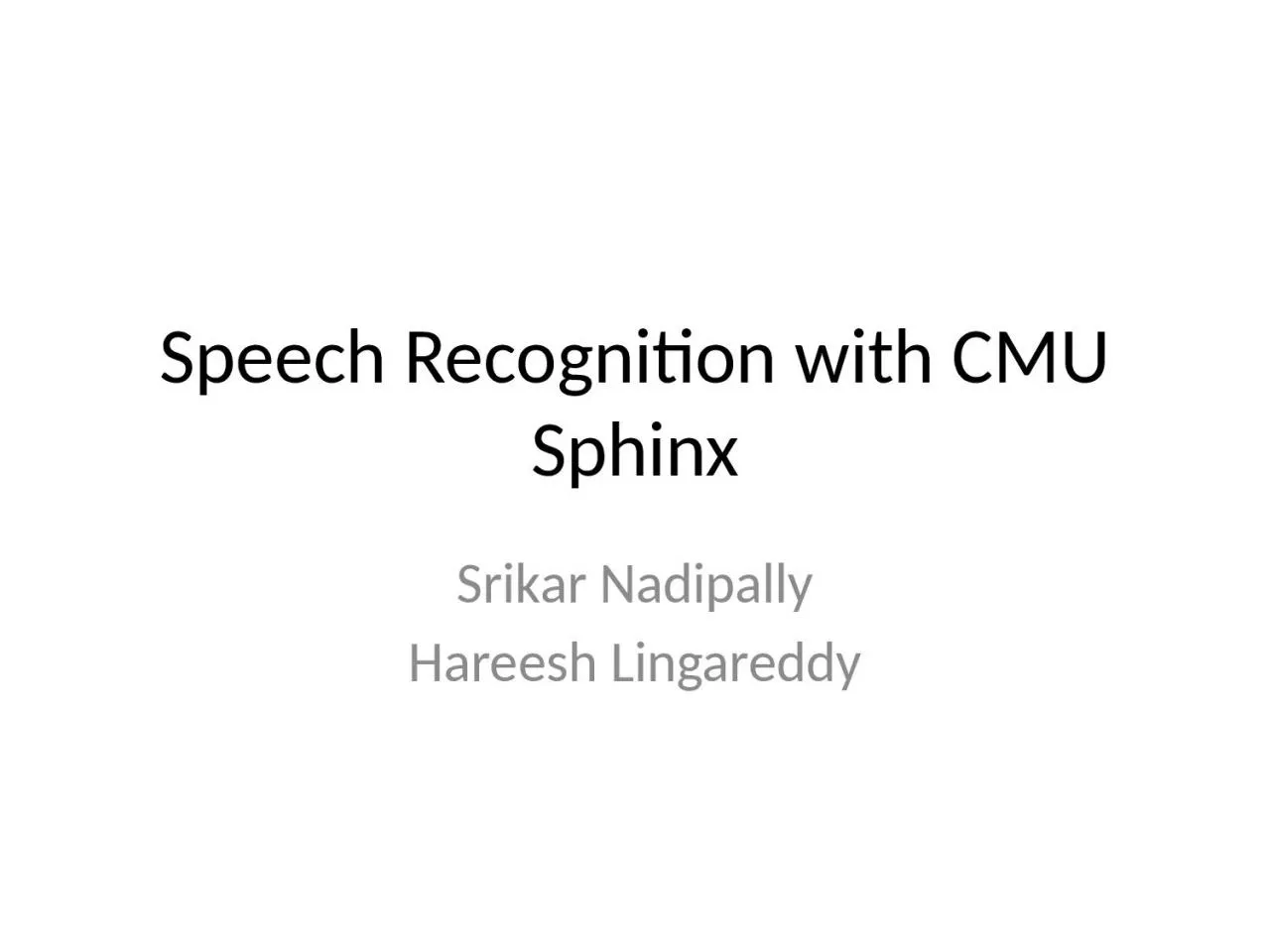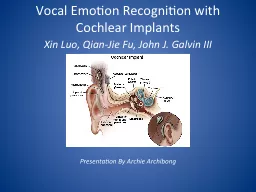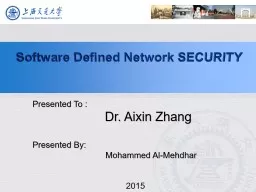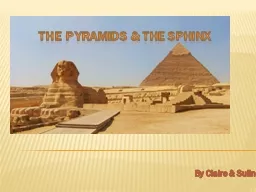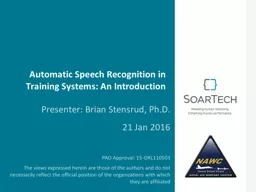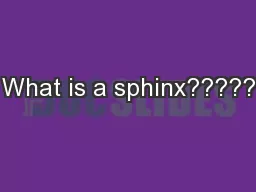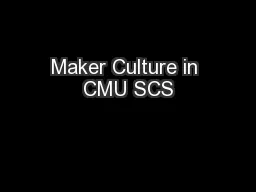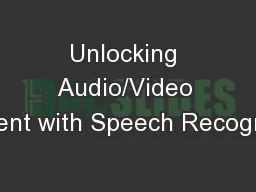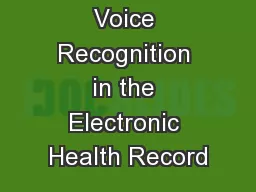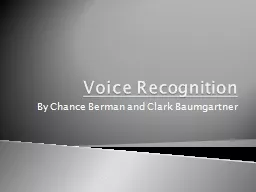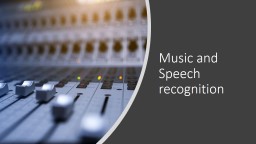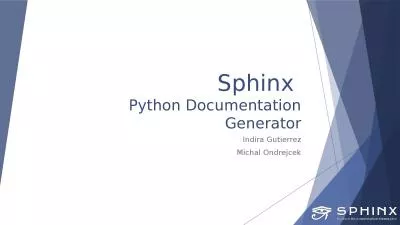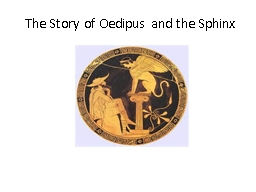PPT-Speech Recognition with CMU Sphinx
Author : singh | Published Date : 2023-09-24
Srikar Nadipally Hareesh Lingareddy What is Speech Recognition A Speech Recognition System converts a speech signal in to textual representation 3 of 23 Types of
Presentation Embed Code
Download Presentation
Download Presentation The PPT/PDF document "Speech Recognition with CMU Sphinx" is the property of its rightful owner. Permission is granted to download and print the materials on this website for personal, non-commercial use only, and to display it on your personal computer provided you do not modify the materials and that you retain all copyright notices contained in the materials. By downloading content from our website, you accept the terms of this agreement.
Speech Recognition with CMU Sphinx: Transcript
Download Rules Of Document
"Speech Recognition with CMU Sphinx"The content belongs to its owner. You may download and print it for personal use, without modification, and keep all copyright notices. By downloading, you agree to these terms.
Related Documents

